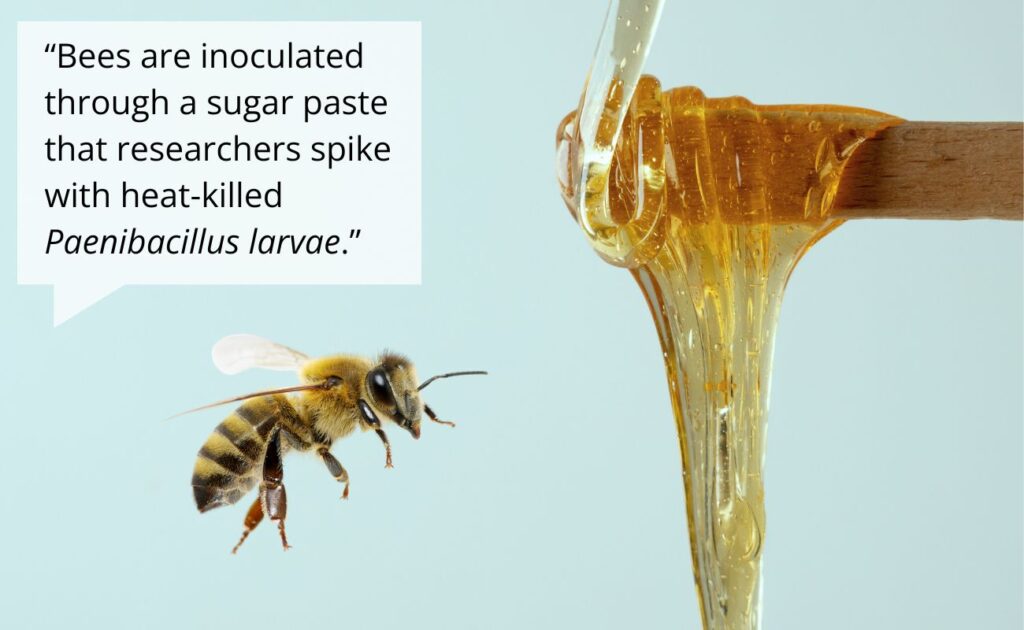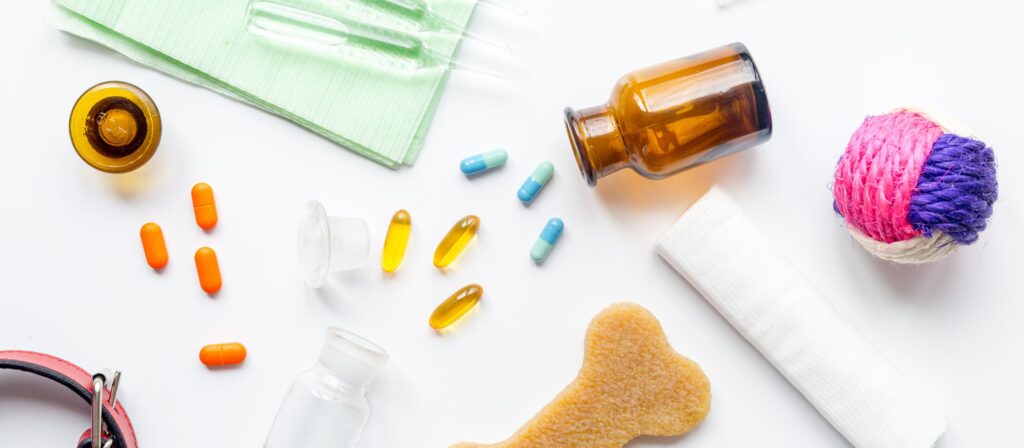August is a month, in which in Poland we celebrate the Great Bees Day. It is a suitable occasion to provoke us to think about how much we owe bees and what the world could look like without them. We can spill the beans and admit that humans cannot survive without these tiny creatures. Fortunately, we have some options to protect them and humans from disaster. Let’s look at what bees could offer humans and what humans could offer the bees.
Why the Pharmaceutical Industry Needs Bees: Unveiling the Hidden Benefits of Honey and Bee Products
Pharmaceutical industry without bees will be at a loss of valuable substances. Besides the most popular and well-known from its anti-inflammatory properties honey, there are other precious bees’ products, like propolis, widely sold as a dietary supplement in form of tablets or sprays for sore throat. Propolis is also examined as a potent anti-herpetic agent, as good as acyclovir, like trials suggest1,2. Promising studies in mice showed propolis might be an adequate agent to be used in sarcopenic obesity due to enhancing gut microbiota3. Additionally, some animal studies showed that royal jelly, due to its antioxidant properties, might improve learning and memory deficits in Alzheimer’s disease4,5. Last but not least, recently, there is an increasing interest in melittin, a component of bee venom, which in cell-based studies presents promising strong anti-cancer activity6.

Beneficial effects of honeybee products are because of bioactives, including e.g. phenolics, methylglyoxal, royal jelly proteins and oligosaccharides. The bee venom only contains at least 18 pharmacologically active components. Several studies showed that bee products combined with conventional medication may lead to positive results of the tharapy 7,8,9. Royal jelly given in oral mucositis, in patients undergoing radiotherapy and chemotherapy, markedly shortened its healing time. Animal study revealed that manuka honey and propolis inhibit tumour growth and improve host survival when used in combination with chemotherapy or antitumor drugs.
The interest in research on the pharmacological activity of bee products, increased siginicantly in recent decades, disclosing numerous biological properties. It is imperative to exploit honeybee products’ potential and standardize their use. Therefore, we should protect bees as to get the best of their presence in our environment.
Critical Threats to Bees: Pesticides, Parasites, and Diseases Endangering Their Survival
Pesticides, parasites, climate change, nutritional stress — the list of hazard factors that put the bees’ existence in danger is long. Throughout past decades, one of the most debilitating risk for bees is constantly varroa – a parasitic mite of honey bee brood. Untreated infested colony of bees usually dies within 2-3 years because of parasite mite syndrome. Another serious threat is American foulbrood, which is a bacterial disease. Infected brood usually dies at the pre-pupal or pupal stage. The disease cannot be cured, meaning that the destruction of infected colonies and hives or irradiation of infected material is the only way to manage it. Another threat is a fungus Nosema ceranae, which makes bees unable to digest efficiently and causes thir early death.
The World’s First Vaccine for Bees and other veterinary products for honeybees treatment
Fortunately, the pharmaceutical industry comes to help not only in human diseases but also in animal disorders. However, it is difficult to prepare medicine for such small and unique creatures like bees. Bees, which are organized in society, are higlyh sensitivie to chemicals; moreover they play a crucial role in pollination and honey production. While developing the right remedy, bees’ well-being, both individually and collectively, has to be considered, ensuring not to poison their environment or our food with contaminated honey. In many diseases, antibiotics and disinfection of hives are used to prevent further development of the disorder. However, there are also available targeted products that effectively deal with danger. Varroa can be controlled not only by varroacides but also by using veterinary medicinal products with, e.g. thymol, oxalic acid, amitraz. Although caution should be exercised, as treatments should only be given at times, when honey is not produced by bees.

Recently, there has been a lot of talk about the first vaccine designed for insects – bee vaccine against American foulbrood, which is a breakthrough in protecting honeybees. It got conditional approval in the US and in Canada. Bees are inoculated through a sugar paste that researchers spike with heat-killed Paenibacillus larvae. Importantly, the vaccine only has to be given to the queen bee, what makes the administration process simpler and less time-consuming.
Requirements for veterinary medicinal products (VMP)
Requirements for veterinary medicinal products (VMP) can be found in Regulation (EU) 2019/6, the purpose of which is to ensure availability and access to safe and high-quality medicines for veterinarians, farmers and pet owners to treat and prevent animal diseases. VMP can be registered under European or national procedures, like medicinal products for humans. The dossier should contain technical documentation necessary for demonstrating the quality, safety and efficacy of the product, a summary of the pharmacovigilance system master file and information listed in Annex I of mentioned Regulation, e.g. legal basis for the application and product information. If you are planning the development and registration of such a product, or need post-marketing support, check our page about veterinary products.

Summing up, bees in our environment might bring many benefits to the pharmaceutical industry and human health. We can perceive hives not only as a source of honey but also as a potential factory of new medicinal products. That is why we should protect bees and fortunately new veterinary medicinal products deal with bees’ diseases and save colonies.
- Arenberger P, Arenbergerova M, Hladíková M, Holcova S, Ottillinger B. Comparative Study with a Lip Balm Containing 0.5% Propolis Special Extract GH 2002 versus 5% Aciclovir Cream in Patients with Herpes Labialis in the Papular/Erythematous Stage: A Single-blind, Randomized, Two-arm Study. Curr Ther Res Clin Exp. 2017 Oct 14;88:1-7.
- Rocha MP, Amorim JM, Lima WG, Brito JCM, da Cruz Nizer WS. Effect of honey and propolis, compared to acyclovir, against Herpes Simplex Virus (HSV)-induced lesions: A systematic review and meta-analysis. J Ethnopharmacol. 2022 Apr 6;287:114939.
- Okamura T, Hamaguchi M, Bamba R, Nakajima H, Yoshimura Y, Kimura T, Hashimoto Y, Majima S, Senmaru T, Ushigome E, Nakanishi N, Asano M, Yamazaki M, Nishimoto Y, Yamada T, Fujikura C, Asama T, Okumura N, Takakuwa H, Sasano R, Fukui M. Brazilian green propolis improves gut microbiota dysbiosis and protects against sarcopenic obesity. J Cachexia Sarcopenia Muscle. 2022 Dec;13(6):3028-3047.
- Zamani Z, Reisi P, Alaei H, Pilehvarian AA. Effect of Royal Jelly on spatial learning and memory in rat model of streptozotocin-induced sporadic Alzheimer’s disease. Adv Biomed Res. 2012;1:26.
- Raoufi S, Salavati Z, Komaki A, Shahidi S, Zarei M. Royal jelly improves learning and memory deficits in an amyloid β-induced model of Alzheimer’s disease in male rats: Involvement of oxidative stress. Metab Brain Dis. 2023 Apr;38(4):1239-1248.
- Pandey P, Khan F, Khan MA, Kumar R, Upadhyay TK. An Updated Review Summarizing the Anticancer Efficacy of Melittin from Bee Venom in Several Models of Human Cancers. Nutrients. 2023 Jul 12;15(14):3111.
- Fernandez-Cabezudo MJ, El-Kharrag R, Torab F, Bashir G, George JA, El-Taji H, al-Ramadi BK. Intravenous administration of manuka honey inhibits tumor growth and improves host survival when used in combination with chemotherapy in a melanoma mouse model. PLoS One. 2013;8(2):e55993.
- Erdem O, Güngörmüş Z. The effect of royal jelly on oral mucositis in patients undergoing radiotherapy and chemotherapy. Holist Nurs Pract. 2014 Jul-Aug;28(4):242-6.
- Bernardino PN, Bersano PRO, Lima Neto JF, Sforcin JM. Positive effects of antitumor drugs in combination with propolis on canine osteosarcoma cells (spOS-2) and mesenchymal stem cells. Biomed Pharmacother. 2018 Aug;104:268-274.


